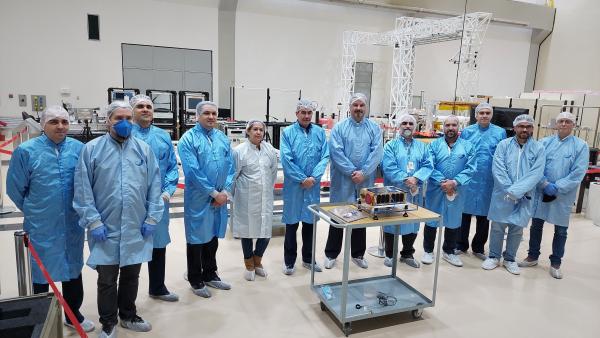SPORT was conceived with the mission of monitoring the ionosphere (upper layer of the atmosphere), collecting data to study the effects of solar storms
Air Force Agency – Major Oliveira Lima
The SPORT (Scintilation Prediction Observations Research Task) satellite, developed by the Aeronautics Technological Institute (ITA), NASA (National Aeronautics and Space Administration), the National Institute for Space Research (INPE) and American universities, approved by the American Institution and the Brazilian Space Agency (AEB), is scheduled to be launched next Monday (11/21), at about 6:20 pm (Brazilian time). The launch will be carried out by SPACEX, a U.S. manufacturer of aerospace, space transportation and communications systems, at the Kennedy Space Center, in the state of Florida (USA). The planning of the transmissions can be viewed here.
Developed by the Military Organization of the Brazilian Air Force (FAB), the satellite is a CubeSat 6U for scientific research in the ionosphere. This means that these are miniaturized satellites (nano-satellites) formed by units of cubes ten centimeters on a side, each unit being worth 1U. Some of these nano-satellites, such as SPORT, are on the cutting edge of knowledge, being capable of performing certain functions that large satellites perform, but at a much lower cost, which makes them very attractive for application in space research.

“The launching of SPORT crowns the work of many students and researchers from ITA and the Department of Aerospace Science and Technology (DCTA). They were difficult years because of the number of obstacles we had to overcome, not only technical but also programmatic and even health-related, since we had a pandemic in the middle of the way. What made this possible was the resilience and competence of the ITA students and researchers, supported by our partners at NASA, INPE, Utah State, the University of Texas at Dallas, and the Aeroespace firm. Only with everyone’s participation could we deliver the satellite ready for launch. Now we are experiencing the excitement and nervousness of waiting to see the fruits of this joint work,” said the Project Manager, Professor Doctor Luís Eduardo Vergueiro Loures da Costa.
DCTA’s Director-General, Air Lieutenant Brigadier Maurício Augusto Silveira de Medeiros, and the ITA’s Rector, Professor Doctor Anderson Ribeiro Correia, were present at INPE’s Integration Laboratory to observe the preparation for shipment of the Brazilian nanosatellite, in July this year. Accompanied by the Project Manager, PhD Professor Luís Loures, they were received by the INPE Director, Clezio Marcos de Nardin and the General Coordinator of Engineering, Technology and Space Science, Geilson Loureiro.
Nanosatellite Mission

SPORT has the mission of monitoring the ionosphere (upper layer of the atmosphere), collecting data for the study of the effects of solar storms, which cause disturbances in activities of today’s society, such as interruption of the GPS signal, black-out of communications, interruption in power transmission and many others.
Lieutenant Brigadier Medeiros talked about the project. “SPORT is the result of the integrated work of students from the ITA Space Center together with INPE technicians and researchers from NASA and North American universities in coordination with DCTA. This synergy is fundamental for those who want to be at the frontier of knowledge. As a result, Brazil wins, and our Space Program wins,” concluded the General Officer.
*** Translated by the DEFCONPress FYI Team ***
